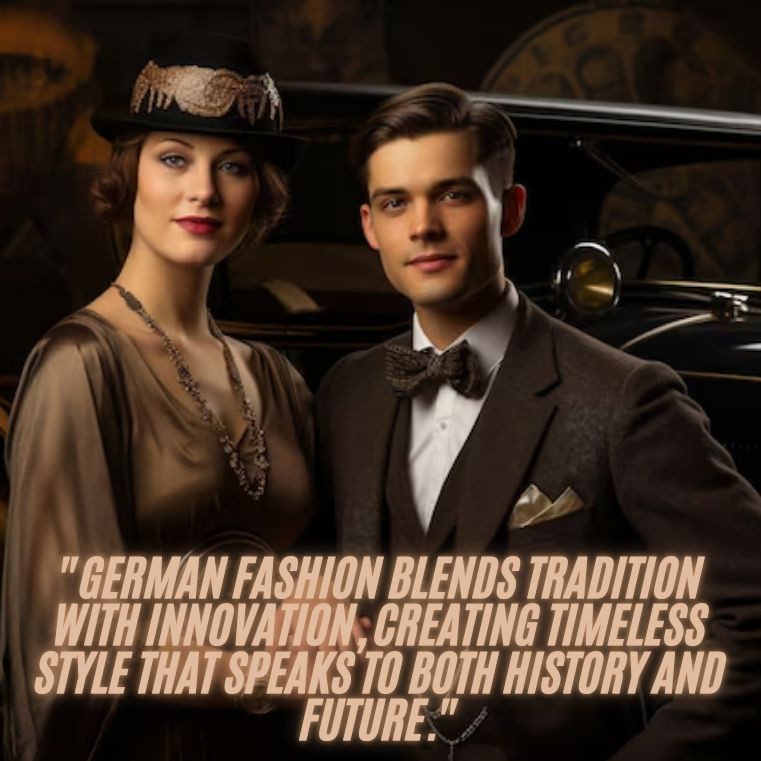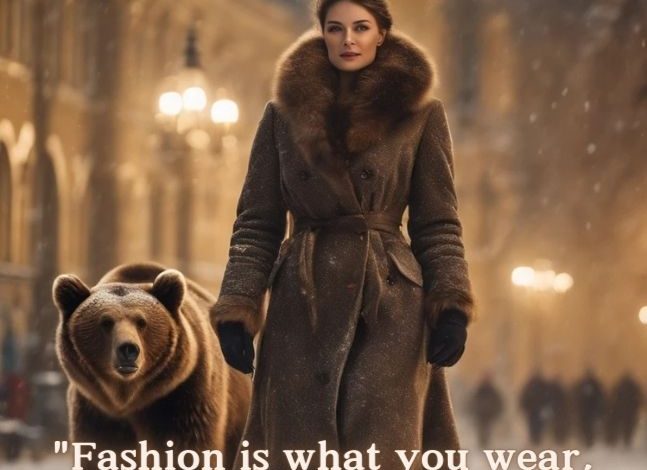
How German Street Style Is Revolutionizing Urban Fashion
Germany has a rich cultural history, and its traditional apparel is an essential aspect of its heritage. For centuries, German clothing has been influenced by the country’s diverse regions, climates, and social customs. From the iconic dirndl and lederhosen to the practical yet elegant folk costumes, German fashion has evolved alongside the social and political changes that have shaped the nation. In the 21st century, German fashion has undergone a remarkable transformation, as contemporary designers and consumers have given traditional garments a modern twist, blending heritage with innovation. This fusion of past and present has resulted in a dynamic and diverse fashion scene that celebrates both history and modernity.
The Roots of Traditional German Apparel
Traditional German clothing is heavily influenced by the country’s rural heritage. The costumes and garments worn in different regions were practical, often designed to meet the needs of daily life, while also reflecting local customs, beliefs, and social status. The two most iconic examples of traditional German attire are the dirndl and lederhosen.
The dirndl, a dress originating from the Alpine regions of southern Germany and Austria, is perhaps the most recognizable form of traditional German apparel. Initially worn by peasants, the dirndl evolved over the centuries from a simple, functional garment to a more elaborate piece of fashion associated with festive occasions. The dress is typically composed of a fitted bodice, a blouse, a full skirt, and an apron, with the colors and fabrics varying by region. In the 19th century, the dirndl became a symbol of national identity, and today it is worn during celebrations like Oktoberfest, representing both tradition and a sense of cultural pride.
Similarly, lederhosen, the leather trousers historically worn by men in southern Germany, Austria, and Switzerland, represent the country’s agricultural roots. These sturdy pants were originally designed for outdoor labor, offering durability and comfort in harsh conditions. They are often paired with suspenders, a shirt, and sometimes a hat, reflecting the rustic, hardworking lifestyle of rural German communities. Today, lederhosen are also worn at cultural events, particularly during Oktoberfest, and continue to evoke a sense of heritage.
The Influence of Modern German Fashion
While traditional German apparel has roots in practicality and function, the global fashion landscape has significantly impacted the way these garments are worn today. In the early 20th century, as industrialization and urbanization took hold in Germany, people in cities began to move away from rural traditions and adopted more modern, Westernized clothing. Yet, the dirndl and lederhosen remained symbols of German cultural pride, even as the country embraced contemporary European fashion trends.
Fast forward to the late 20th and early 21st centuries, when Germany’s fashion scene began to experience a renaissance. Cities like Berlin became global hotspots for fashion and creativity, with designers blending German heritage with avant-garde concepts. Today, German fashion is known for its combination of minimalist, clean lines, and bold, experimental designs, and this sensibility has had a lasting impact on the reinterpretation of traditional attire.
A Modern Twist on Heritage Style
The integration of traditional German garments into contemporary fashion is a perfect example of how history and modernity can coexist. Designers have reimagined dirndls and lederhosen, updating these classic garments with new fabrics, colors, and silhouettes, making them relevant for today’s fashion-forward generation. Here are some key ways traditional German apparel has been modernized:
- Innovative Fabrics and Materials: One of the most noticeable shifts in modern interpretations of traditional German apparel is the use of innovative fabrics. Traditional dirndls and lederhosen were made from wool, cotton, and leather. However, today’s versions often incorporate materials like denim, silk, velvet, and synthetic fibers. These new materials allow for greater comfort and versatility, while also giving garments a more contemporary feel. For example, a dirndl made from satin or lace may feel more luxurious, while a leather lederhosen may be swapped out for a version made from vegan leather to cater to sustainability-conscious consumers.
- Bold Prints and Colors: Traditional German costumes are typically characterized by earthy tones and subtle floral patterns. However, modern versions often feature bolder prints, brighter colors, and intricate embellishments. Designers today experiment with unusual combinations of colors, creating dirndls in everything from neon hues to metallic finishes. This injection of modernity makes these garments more appealing to younger generations, who want to wear something that feels fresh and vibrant while still maintaining a connection to their heritage.
- Modern Silhouettes: The traditional dirndl and lederhosen are designed with specific, time-honored shapes that reflect a bygone era. However, contemporary designers often adjust the silhouettes to suit modern tastes. For example, dirndls may have more flattering cuts, with high-low hems or less voluminous skirts, giving them a more fashion-forward look. Lederhosen, too, are often made more stylish and comfortable, with tailored fits, slimmer cuts, and modern details like zippers or studs, making them more wearable for today’s fashion-conscious men.
- Blending with Streetwear: The concept of “streetwear” has had a profound influence on how traditional garments are worn. In German cities, people are mixing lederhosen or dirndls with everyday fashion items like sneakers, leather jackets, or graphic tees. This fusion of styles not only makes the garments more accessible and wearable for daily life but also helps them transcend the boundaries of formal, celebratory occasions. Wearing lederhosen with sneakers or a dirndl with a modern jacket reflects the urbanization and globalization of German fashion. It’s an indication that heritage can be integrated into daily wear in a way that is both stylish and contemporary.
- Sustainability and Ethical Fashion: Germany has been at the forefront of the sustainability movement in fashion, and this ethos has also affected the way traditional garments are produced. Modern consumers are increasingly concerned with environmental impact, and many German designers have embraced eco-friendly practices by using sustainable materials, supporting ethical labor practices, and designing pieces that are durable and timeless. Traditional garments like dirndls and lederhosen are now often made with a focus on quality and longevity, ensuring that these pieces remain relevant for generations to come. This fusion of heritage and sustainability ensures that traditional German attire continues to evolve in a way that respects both the environment and cultural heritage.
- Global Influence and International Appeal: As global fashion markets become more interconnected, German traditional apparel has found its place on international runways. Designers from Germany and other parts of the world are incorporating elements of German heritage into their collections, introducing the dirndl and lederhosen to global audiences in new and exciting ways. This internationalization of German fashion has brought a fresh perspective to traditional attire, making it a symbol of cross-cultural exchange and modern adaptation.
Conclusion
The fusion of traditional German apparel with modern trends reflects the dynamic nature of fashion, showing how heritage can be both preserved and reimagined. While the dirndl and lederhosen are still worn to celebrate German culture and history, they have also found new relevance in contemporary fashion, thanks to creative innovations in design, materials, and styling. As global fashion continues to evolve, traditional German garments will undoubtedly continue to inspire and influence designers, offering a beautiful blend of the old and the new. This modern twist on heritage style ensures that the rich cultural traditions of Germany will remain vibrant and alive in the world of fashion for years to come.















